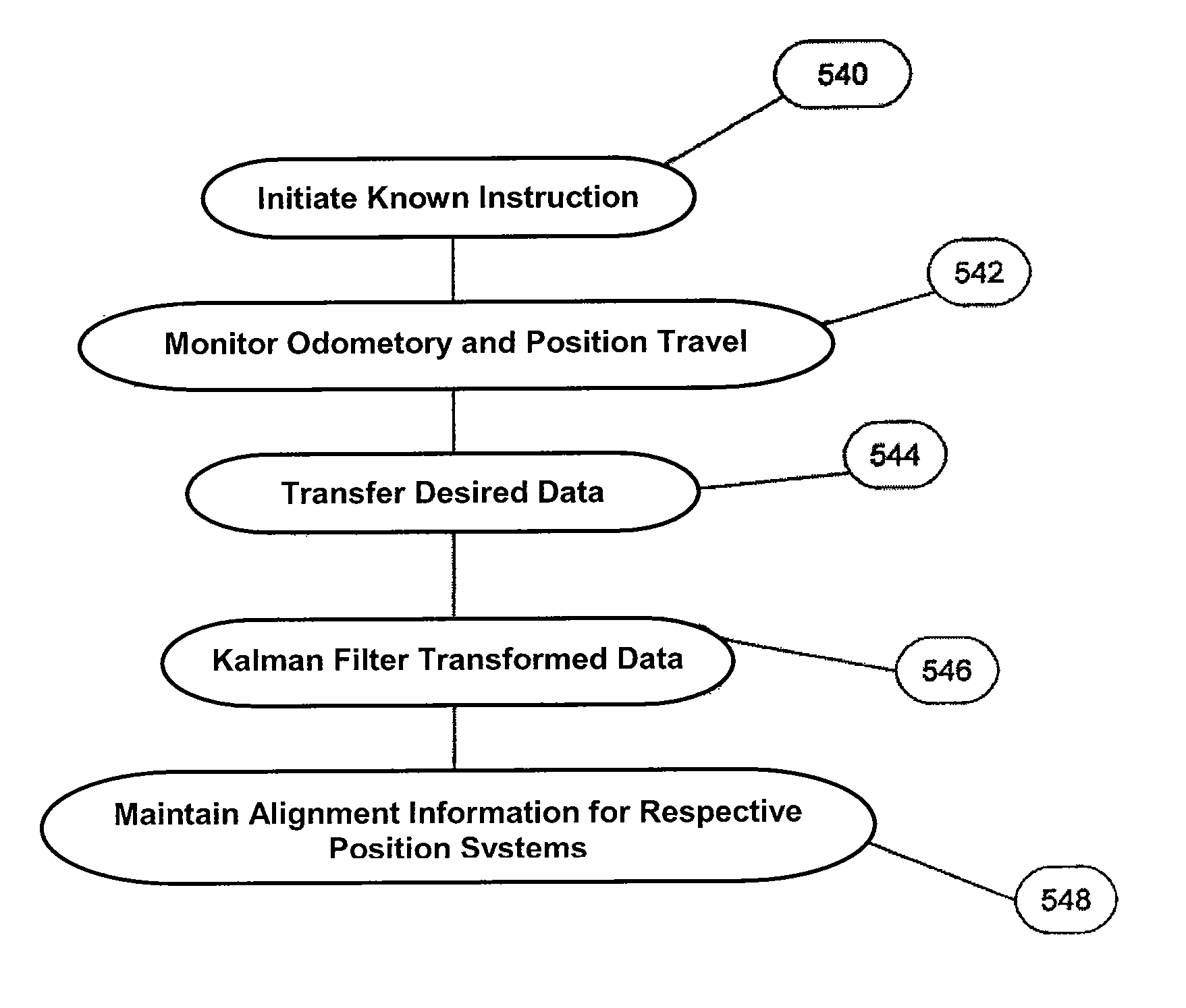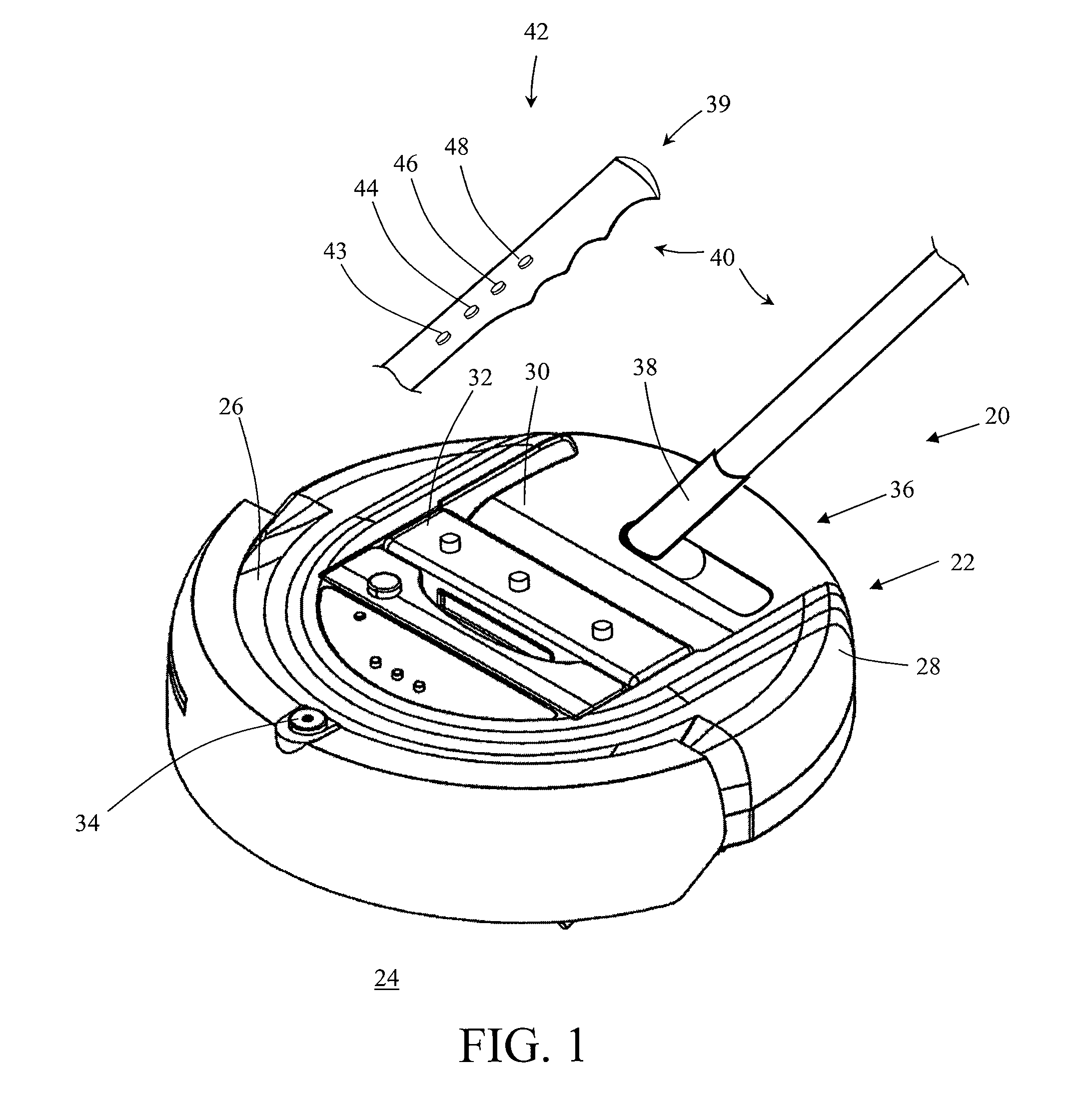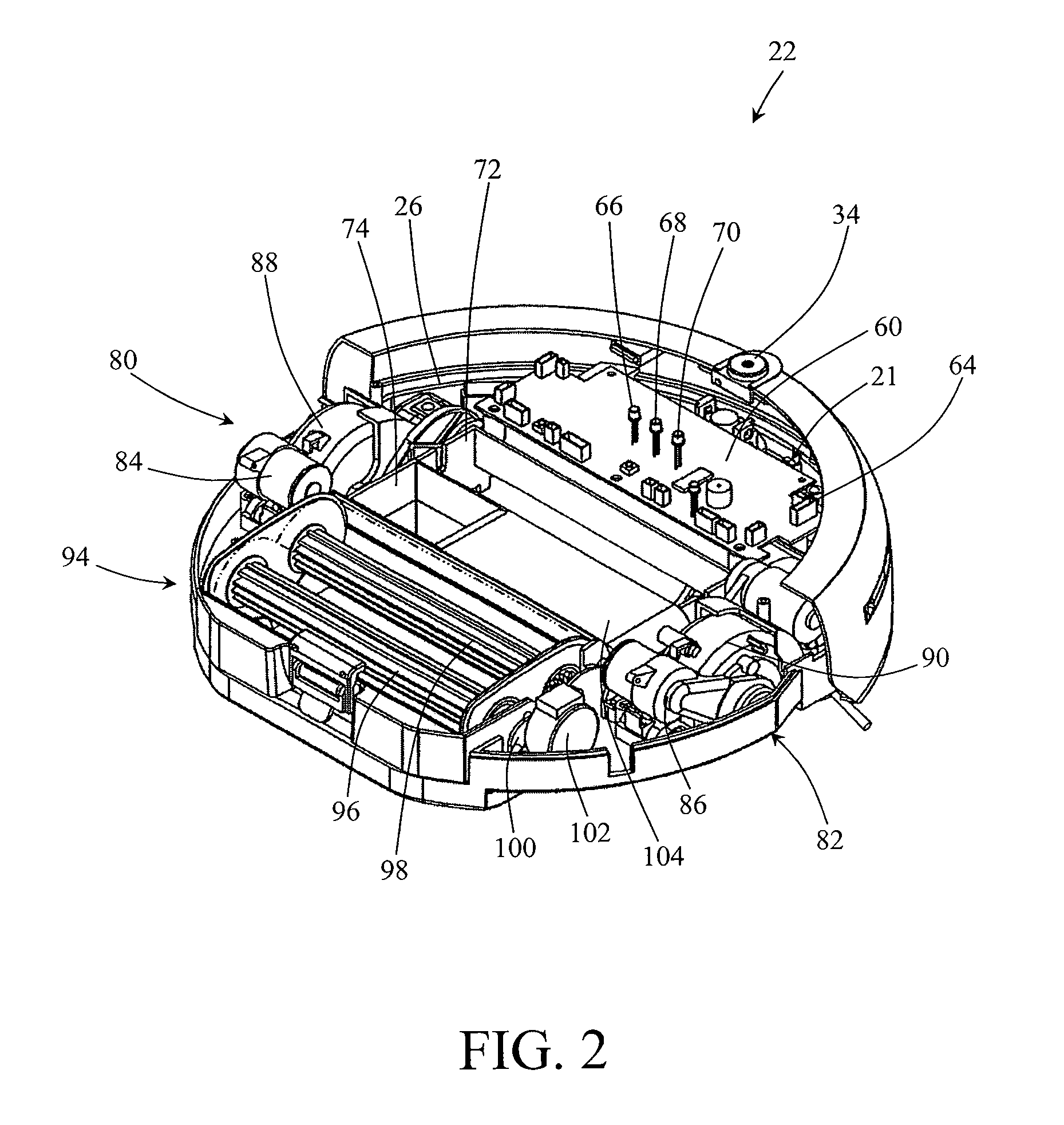Trainable multi-mode floor cleaning device
a floor cleaning and multi-mode technology, applied in the direction of floor surfacing/polishing machines, cleaning filter means, program control, etc., can solve the problems of many autonomous floor cleaning devices not being able to traverse stairs or discontinuities common to many living environments, and devices are not without their respective drawbacks
- Summary
- Abstract
- Description
- Claims
- Application Information
AI Technical Summary
Benefits of technology
Problems solved by technology
Method used
Image
Examples
Embodiment Construction
[0045]FIG. 1 shows an autonomous floor cleaning system 20 according to the present invention. As discussed below, floor cleaning system 20 is constructed to perform autonomous or independent floor cleaning operations. As mentioned above, other cleaning systems / devices and / or floor cleaning systems / devices are disclosed in U.S. Pat. Nos. 7,389,166 and 7,578,020; United States Patent Application Publication Nos. 2004 / 0031121, 2004 / 0031113, 2004 / 0031111, 2005 / 0229340, 2006 / 0288519, 2006 / 0293794, 2008 / 0188984; and U.S. Provisional Patent Application Ser. Nos. 60 / 948,676, 60 / 908,312, and 60 / 946,848; the disclosures of each of which are hereby expressly incorporated. It is appreciated that the autonomous device disclosed herein has applications beyond floor cleaning such as lawn care and toys and / or entertainment purposes. In an exemplary embodiment, autonomous device 22 is configured to perform floor cleaning operations. In a more preferred embodiment of the invention, device 22 is confi...
PUM
| Property | Measurement | Unit |
|---|---|---|
| area | aaaaa | aaaaa |
| structures | aaaaa | aaaaa |
| weight | aaaaa | aaaaa |
Abstract
Description
Claims
Application Information
 Login to View More
Login to View More - R&D
- Intellectual Property
- Life Sciences
- Materials
- Tech Scout
- Unparalleled Data Quality
- Higher Quality Content
- 60% Fewer Hallucinations
Browse by: Latest US Patents, China's latest patents, Technical Efficacy Thesaurus, Application Domain, Technology Topic, Popular Technical Reports.
© 2025 PatSnap. All rights reserved.Legal|Privacy policy|Modern Slavery Act Transparency Statement|Sitemap|About US| Contact US: help@patsnap.com



